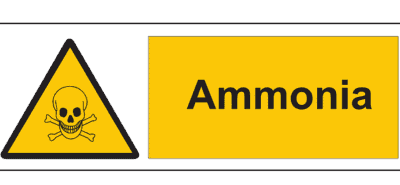A large anhydrous ammonia spill earlier this year may have caused permanent disabilities in those who were exposed. When people are exposed to toxic chemicals, the effects are not always readily apparent. In some cases, it may take months or even years before the full extent of the damage from a toxic exposure becomes clear.
The Toxic Spill
On April 25th, a plume of anhydrous ammonia was discovered spewing from a tractor-trailer truck en route to a farm in Northern Illinois. The incident occurred in Beach Park which is roughly 40 miles from downtown Chicago. At least 40 people, including firefighters and a police officer, received treatment at local hospitals following contact with the chemical. Most were suffering from signs of respiratory distress including choking sensations, dizzy spells, and difficulty breathing.
All but seven of those exposed to the ammonia were treated and released. Seven victims remained in critical condition for several days following the exposure and required the assistance of artificial respirators to breathe.
The cause of the leak is believed to be a leaking hose that connected the 2-ton tanks containing the ammonia. There are roughly a dozen similar spills involving ammonia each year in Illinois. The Beach Park spill was the third such incident in 2019.
Long-Term Injuries of Ammonia Exposure
Exposure to high concentrations of ammonia can cause burns to the nose, throat, and respiratory system. It can cause bronchiolar and alveolar damage that can result in sudden respiratory failure. Contact to skin or eyes can cause severe burns and may result in permanent eye damage or blindness. This occurs because when ammonia makes contact with these surfaces it converts into ammonium hydroxide which can cause severe chemical burns. These are permanent injuries that can significantly impact the individual’s quality of life, ability to work, and ability to participate in the activities they once enjoyed doing.
Those who have suffered significant toxic exposure injuries should receive annual pulmonary function tests and regular examinations to test for the presence of Chronic Obstructive Pulmonary Disease (COPD) and other potential issues including pulmonary edema, gastric perforation, glaucoma, etc. that can develop over time. While treatment can mitigate symptoms, there are no current medical treatments that can fully reverse the damage. Once an individual suffers a severe exposure, that person is at risk of living with a lifelong injury.

